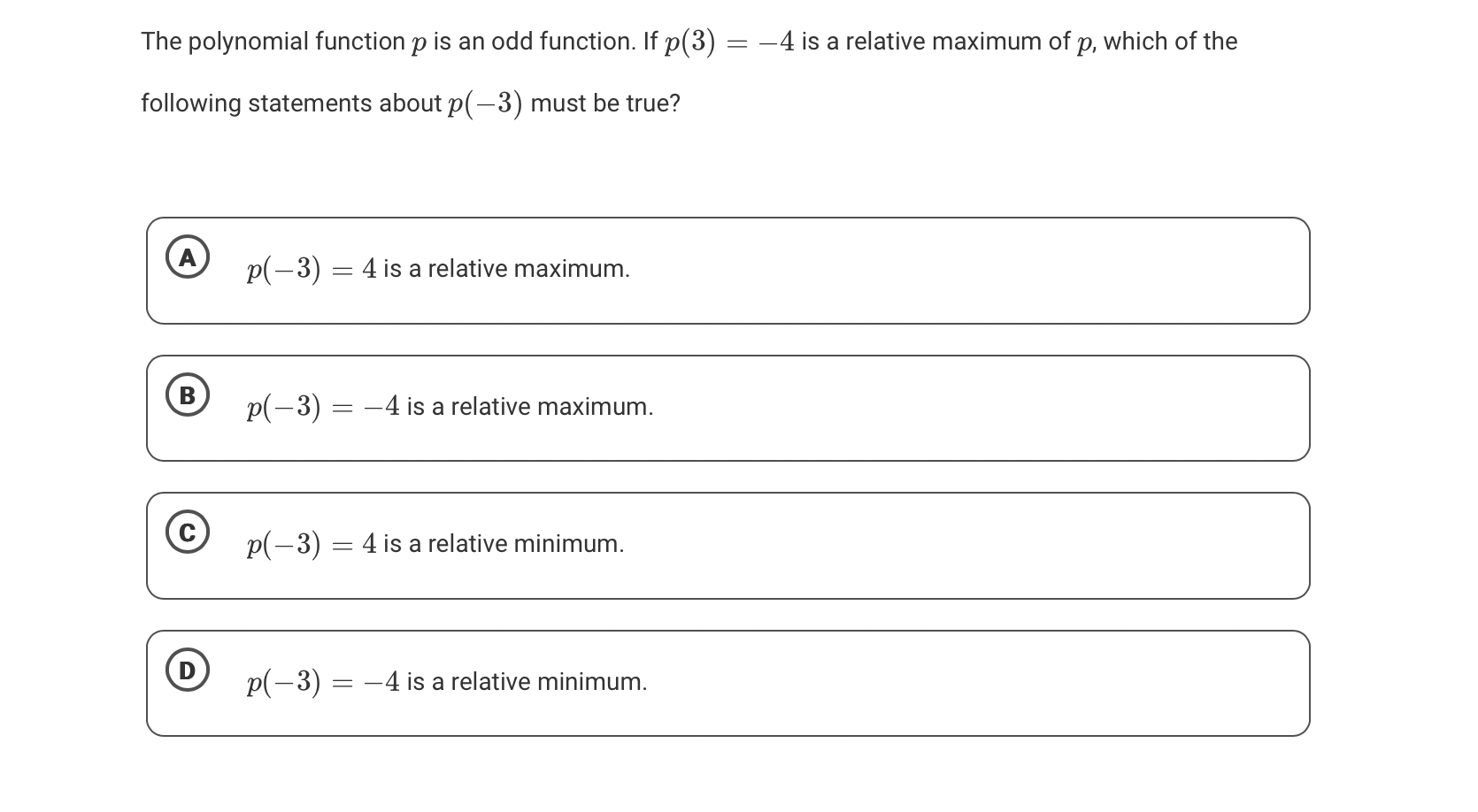The polynomial function p is an odd function. If p(3) = -4 is a relative maximum of p, which of the following statements about p(-3) must be true?

Understand the Problem
The question is asking about the properties of a polynomial function that is odd, specifically in the context of relative maxima and minima given a specific value. It highlights the behavior of the function at certain points and how those relate to the characteristics of odd functions.
Answer
$p(-3) = 4$ is a relative maximum.
Answer for screen readers
$p(-3) = 4$ is a relative maximum.
Steps to Solve
-
Understanding Odd Functions An odd function $p(x)$ satisfies the property that $p(-x) = -p(x)$ for all $x$. This means if $p(3) = -4$, then $p(-3)$ can be determined.
-
Finding the Value of $p(-3)$ Given that $p(3) = -4$, we can use the property of odd functions to find $p(-3)$: $$ p(-3) = -p(3) = -(-4) = 4 $$
-
Analyzing the Relative Maximum Since $p(3) = -4$ is stated to be a relative maximum, then $p(3)$ is lower than $p(2)$ and $p(4)$ — points close to $3$. Because $p(-3) = 4$ is greater than $p(3) = -4$, we can conclude that $p(-3)$ is greater than its neighbor values near $-3$, making $p(-3)$ a relative maximum.
$p(-3) = 4$ is a relative maximum.
More Information
This conclusion follows from the properties of odd functions and the definition of relative maxima. Odd functions are symmetric around the origin, affecting their maxima and minima states in a reflective manner.
Tips
- Misunderstanding what it means for a point to be a relative maximum; knowing that the function’s value at that point must be greater than its values at nearby points is crucial.
- Forgetting the odd function property which leads to incorrect evaluations of $p(-3)$ from misinterpreting $p(3)$.
AI-generated content may contain errors. Please verify critical information